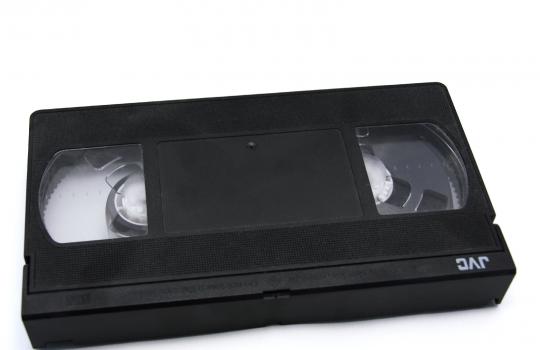In the first of three articles to commemorate the ruby anniversary of Video Arts, Martin Addison looks at how training has changed over the past 40 years.
1972 was the year of the Munich Olympics, Nixon's visit to China and the UK's entry into the European Economic Community; The Godfather was the highest grossing film; Chuck Berry reached number one with My-Ding-a-Ling; Mastermind, Are You Being Served? and Emmerdale Farm first aired on TV; Watership Down was published; Jesus Christ Superstar made its West End debut and John Cleese and Sir Antony Jay co-founded the training company Video Arts.
Over the past 40 years, fundamental changes have taken place in three key areas of training: in the way that learning is delivered, in the role of the trainer and in the nature of training itself. We can chart these changes by looking at how technology has been used to support training, from 16mm film to m-learning.
 "Over the past 40 years, fundamental changes have taken place in three key areas of training: in the way that learning is delivered, in the role of the trainer and in the nature of training itself."
"Over the past 40 years, fundamental changes have taken place in three key areas of training: in the way that learning is delivered, in the role of the trainer and in the nature of training itself."16mm film
Film has featured in training since the Second World War, when the British Ministry of Information realised that its impact - and its ability to provide authoritative instruction quickly and consistently - would benefit military training.
By 1972, organisational training was built around a highly-structured programme of classroom training courses, often published in an annual programme with dates and times set in stone. It was not uncommon for management trainees to be out of the office at a five-day residential training event and the pioneering technology for training support had become 16mm film.
The first 16mm training film we made covered after-sales service. Called 'Who sold you this then?', it had three distinctive aspects, which were to become characteristic of our productions:
- Firstly, it featured a 'wrong way, right way' lesson structure. Scenes showing the 'wrong way' to do something would provoke discussion, enabling trainees to draw out the lessons for themselves. The 'right way' scenes would then reinforce those lessons
- Secondly, it utilised humour, which was revolutionary in management training at the time. It was a brave decision to try to make training 'fun and interesting'. It worked, though, as the humour helped to emotionally involve the audience, which made the learning points more memorable
- Thirdly, it featured recognised British actors. Our early films would explain business concepts by telling a story and showing engaging characters in a range of situations, coming to terms with real issues. It was a conscious decision to ask well-known faces to bring life to these characters. The long list of famous actors who have appeared in Video Arts films began with the likes of Cleese, Ronnie Corbett and Ronnie Barker. Since then, talent has included Emma Thompson, Stephen Fry, Rowan Atkinson, Dawn French, Hugh Laurie, Robert Lindsay, Martin Clunes, James Nesbitt, Ricky Gervais, Rob Brydon and even Prince Charles!
Video and DVD
As technology developed, 16mm film evolved into video tape. VHS players became a consumer item with one in every home and in every training room. As time moved on and after a brief flirtation with video disc and CD-I, it settled again with the more flexible format of DVD.
In the early days of training videos, a trainer would show the entire film and build their session around the content. Pioneering trainers then began to use video content more judiciously, either as an ice-breaker to set the tone for the day, as an example or case study, to reinforce key points or to review the learning and recap the themes that were discussed.
"Elearning not only offered a cost-effective way of training large numbers of people, it also cut down on travel time and meant people spent less time away from their desks or workplace."
The advent of DVDs - which split the video content into separate learning chapters - made it much easier for trainers to show certain clips, rather than the whole film from start to finish.
CBT and elearning
In the 1980s, the arrival of desktop personal computers heralded the evolution of computer-based training and learning via CD-i and CD-Rom.
Although the early computer-based training courses contained little more than simple text pages, they were profoundly important. For the first time, they enabled individuals to access 'training content' outside of the classroom other than by reading a book. The conceptual distinction began to arise between training (as something provided by a trainer) and learning (as something undertaken by the learner).
When the term elearning was coined in 1997 - by the US learning strategist Jay Cross - the PC had created high expectations about how workplace training would be forever transformed. Elearning not only offered a cost-effective way of training large numbers of people, it also cut down on travel time and meant people spent less time away from their desks or workplace. The self-paced aspect offered convenience and flexibility to learners, allowing them to revisit aspects of a course, to top up their skills or pick up on key refresher points, as and when needed.
However, not everyone wanted to learn in isolation. Many people found the content of elearning courses unappealing. Some courses lasted four hours or more and followed learning paths that attempted to replicate the instructor-led experience.
Parts two and three of this feature will be published in the next fortnight.
Martin Addison is CEO of Video Arts, providers of generic, tailored and custom video training, elearning and m-learning solutions. He can be contacted via email here








